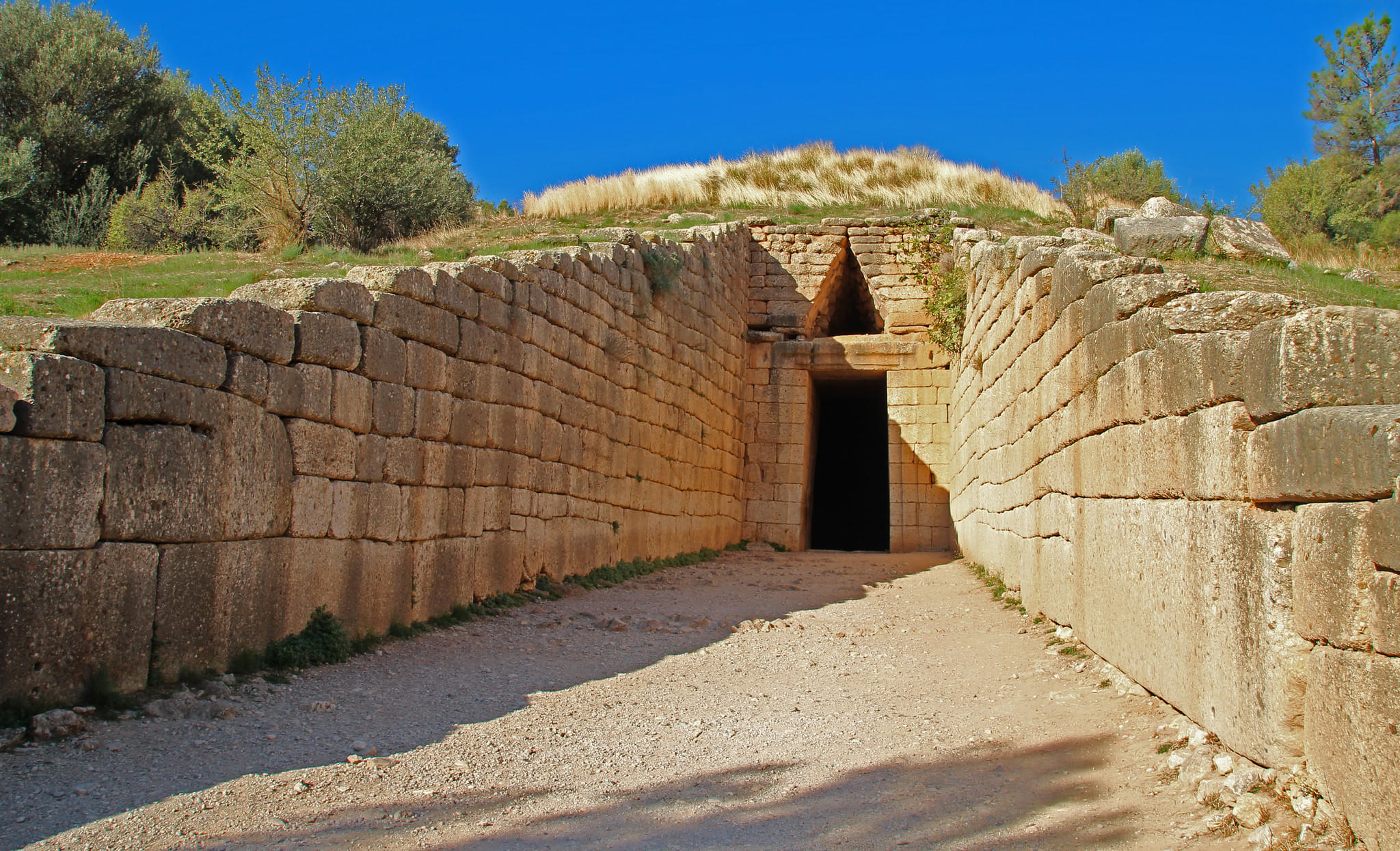The Treasury of Atreus, also known as the Tomb of Agamemnon, stands as a testament to ancient Greek engineering and architecture. Located in Mycenae, Greece, this monumental tholos tomb dates back to the Bronze Age, around 1250 BCE. Its imposing beehive-shaped dome and grand entranceway showcase the mastery of the Mycenaean civilization. Despite its age, the Treasury of Atreus remains a captivating symbol of ancient Greek culture and history.
The Treasury of Atreus, an awe-inspiring archaeological marvel nestled in the hills of Mycenae, Greece, is a testament to the ingenuity and craftsmanship of the ancient world. Constructed around 1250 BCE during the late Bronze Age, this monumental beehive-shaped tholos tomb is attributed to the legendary King Agamemnon, although its true purpose remains shrouded in mystery. The structure, built with massive limestone blocks meticulously stacked to form a towering dome, once housed the remains of Mycenaean elites.
What truly sets the Treasury of Atreus apart is its remarkable engineering. The imposing entrance, framed by colossal stone lintels weighing several tons, leads into a grand burial chamber. Despite millennia of exposure to the elements and seismic activity, the tomb's intricate corbelled construction has endured, captivating visitors with its timeless elegance and enigmatic aura. As one stands beneath its majestic dome, one cannot help but marvel at the ancient Greeks' architectural prowess, which continues to inspire awe and admiration to this day.

